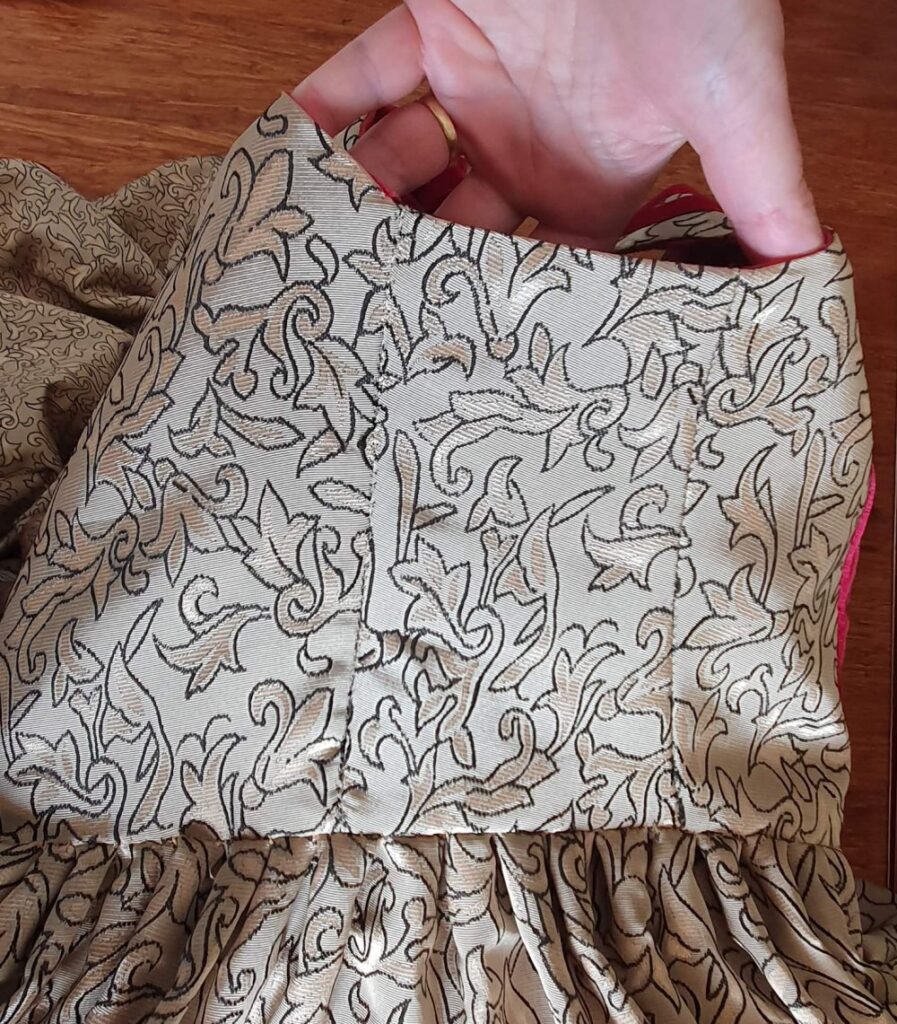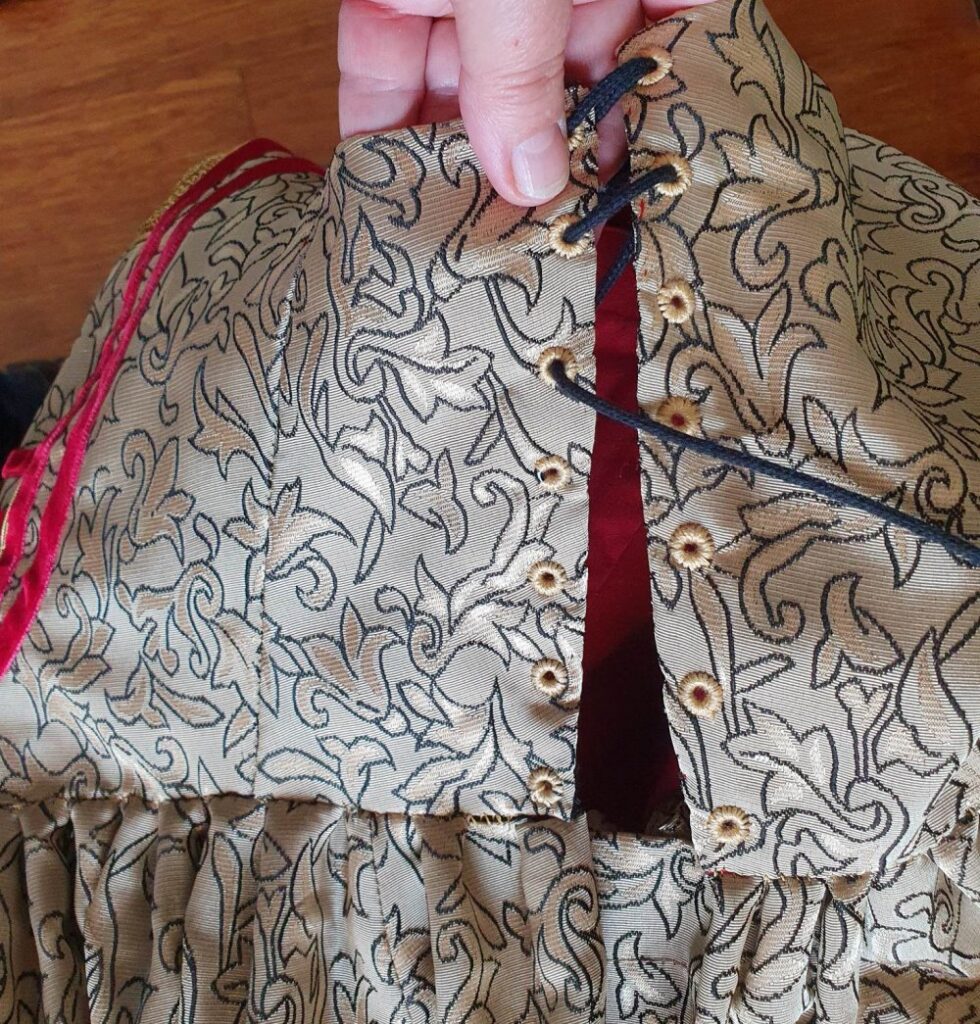This Rock (gown) is based on a portrait of Bianca Maria Sforza from the workshop of Bernhard Strigel.
This style was worn by noble German women at the start of the 16th century. It comes from the transition period from the Gothic to the Renaissance, with a full depth Brustfleck panel and single panel front.
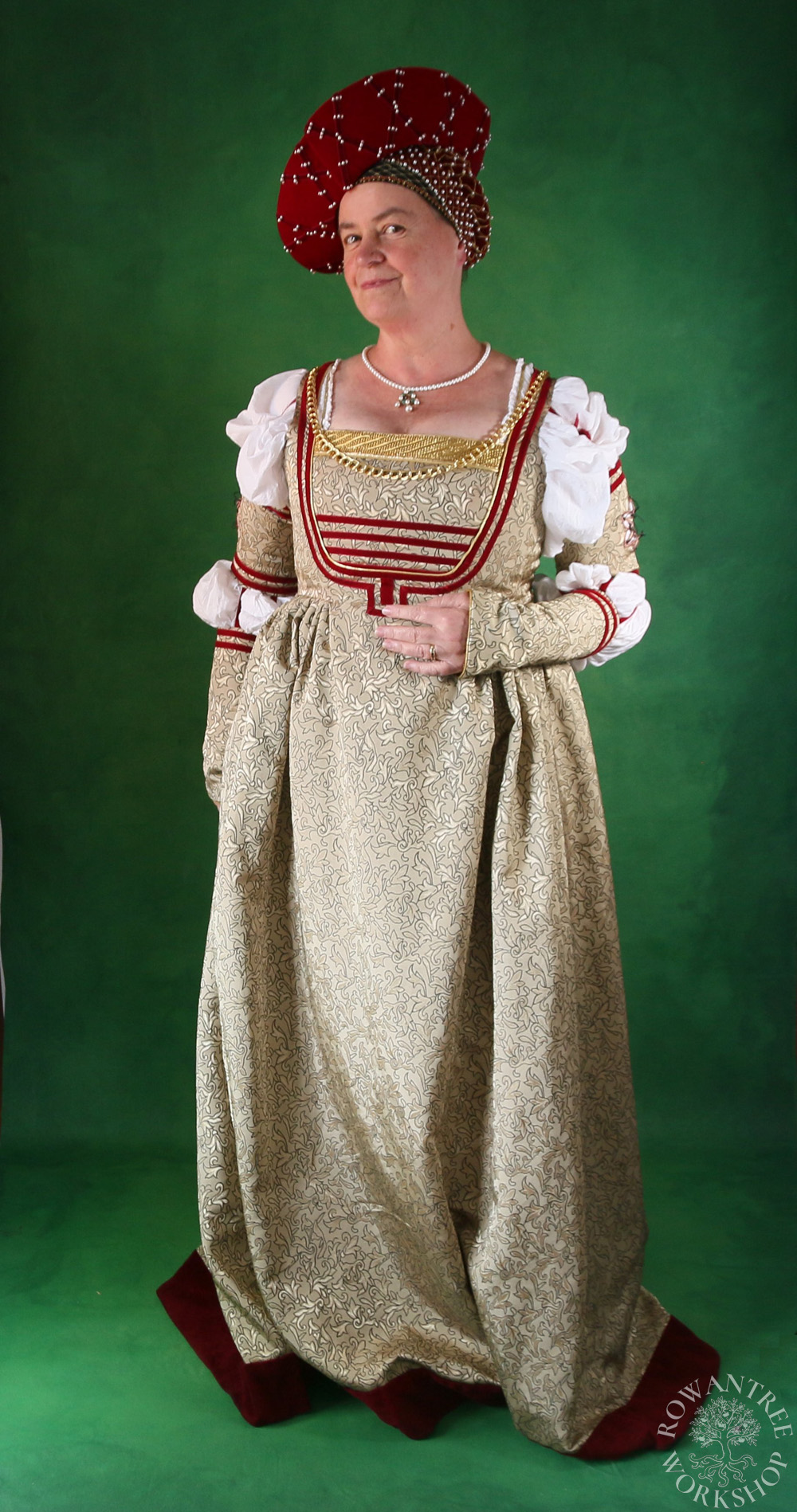
Research and Design
The Rock is based on a portrait of Bianca Maria Sforza which I photographed in Nüremberg in 1996. It appears that this version is from the workshop of Bernhard Strigel – perhaps a copy of another work.
I have not been able to find an online version of this same painting, but I did find another version of the portrait, held in the Kunsthistorisches Museum, Vienna. Whilst it is clearly the same sitter and gown, the details vary significantly!
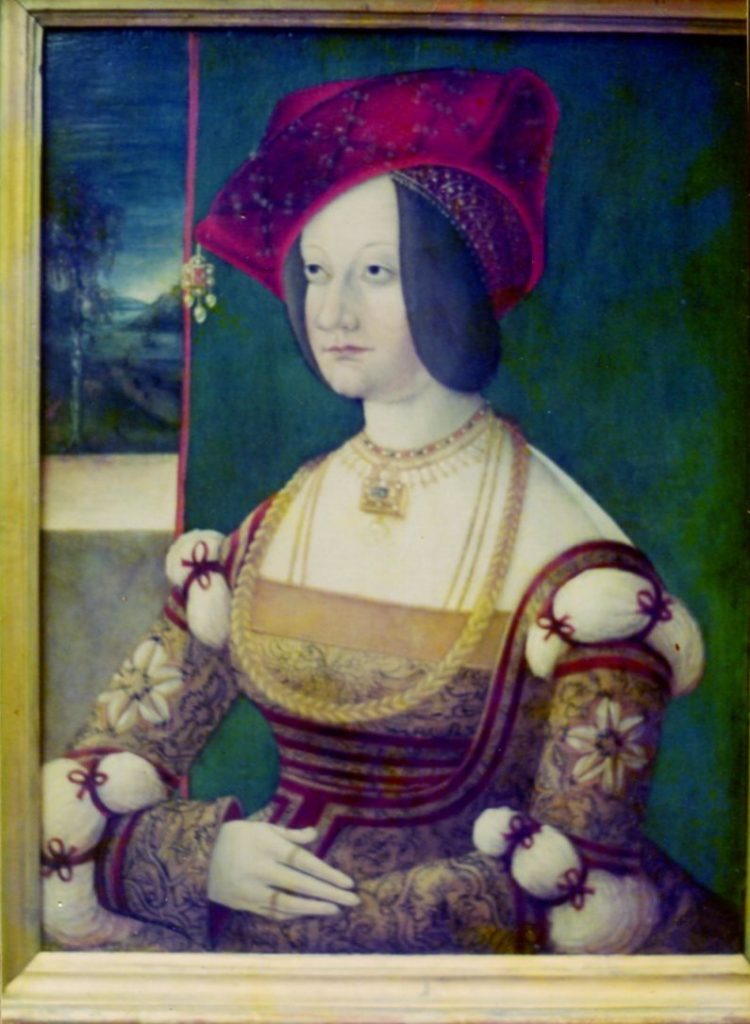
Bianca Maria Sforza, Inv 5732
Photo: Robyn Spencer

Photo: Robyn Spencer
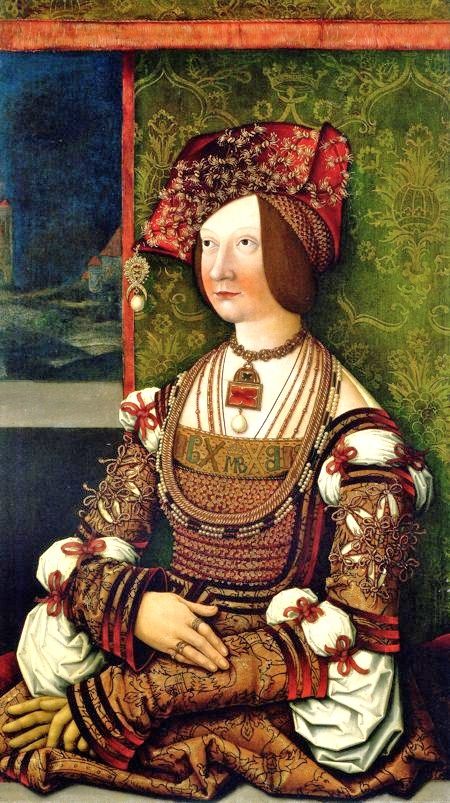
The low curved bodice with infill is typical of the very start of the 16th century – the style is also seen in portraits by Dürer, Cranach, Meteys and others from this decade. The Nüremberg painting showed only a half portrait, so I assumed that the base of the skirt is banded, as was common for early 16th century noble gowns.
The fabric in the portrait is a dull gold brocade, probably silk, with flower and foliage designs in fine black lines (a double headed eagle can also be seen on the bodice infill panel). The gown is decorated with red velvet bands, and the Brustfleck (bodice infill) has a broad woven gold band. The upper sleeve section is striking, with the Hemd visible through the pierced opening.
With no access to silk brocade, I used a synthetic gold brocade with a foliate design in fine black lines, which gives a similar effect. The top of the bodice infill panel has a broad woven gold ribbon, edged with gold cord. The contrast banding and sleeve ties on the original are in red (silk) velvet ribbon. I used synthetic velvet ribbon and gold trimmings.
Construction
The cut is unusual – the front bodice is cut gestalt with the front panel of the skirt, which is pleated into the waist along a horizontal slit. The back bodice is cut separate from the remaining skirt panels. In A History of Costume (1963), Carl Köhler shows a cutting diagram for this style, which I adapted for my pattern.

Source: Köhler 1963
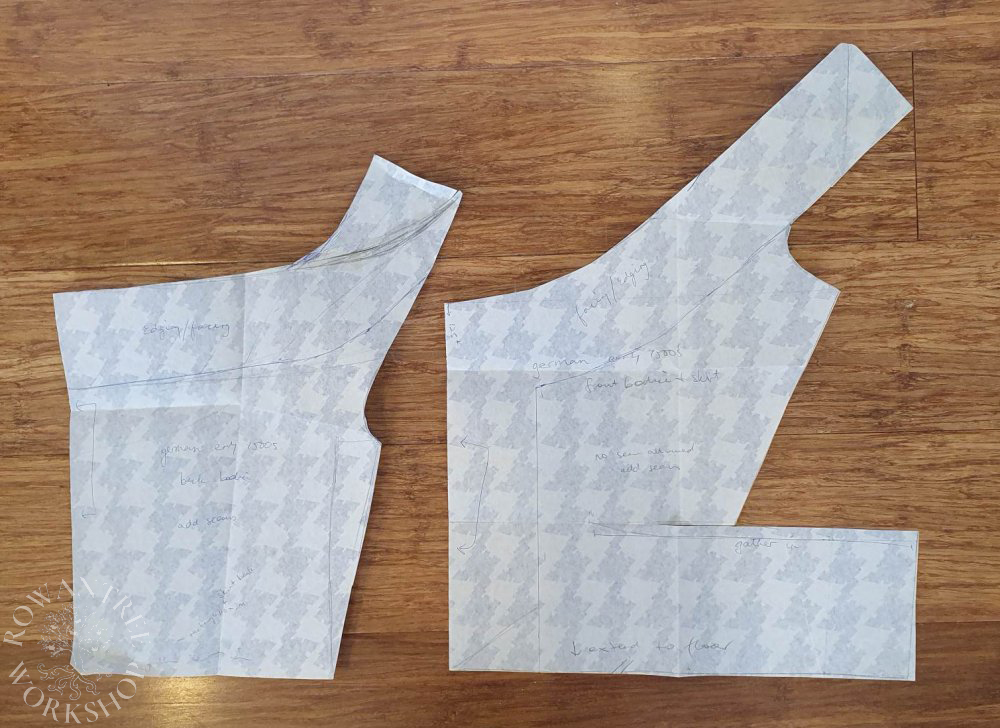
I did a trial of the bodice in scrap fabric, with a short front skirt section to see how this would actually work. Because of the gestalt front panel, the skirt side seams sit forward from the bodice seams, but this would not show. I would need to be very careful attaching the skirt to the bodice slit – a weak point.
The cut meant I wanted the front panel as wide as possible from the fabric, with 3 extra skirt panels (arcs, not flat) to give a hem area of almost 5 meters. Since centre back openings are not seen in contemporary art, I assumed a side opening along the seam, with hooks and eyes.
To give some much needed body, I interlined the bodice panels with cotton canvas, leaving the section across the middle of the front panel free, then sewed the shoulder seams. I sewed the gold piping around the neck edge, turned in under, applied the red velvet ribbon around the neck edge and lined the bodice in sturdy red cotton, with a minim seam on the open slit, sewn very strongly.
I added on the other skirt panels, then faced the top of the whole skirt plus the front panel (instead of lining the skirt). I gathered the skirt in pleats using a pair of draw-threads, then oversewed these to the lined bodice.
With the main body complete, I made a mockup of the Brustfleck, pinned it in, tried it on and adjusted the fit. I made the final version with canvas interlining, ribbon and gold trimmings and red lining, and then sewed it in place along the gold binding and again along the free edge.

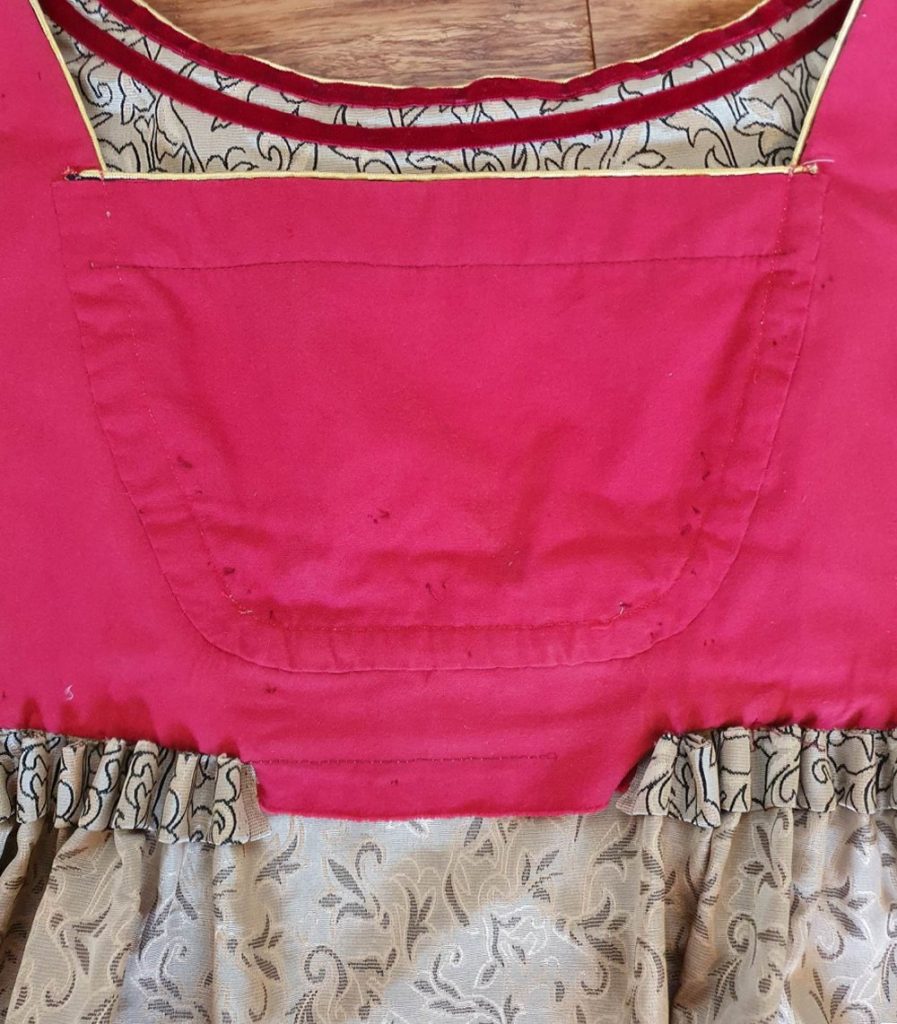
The upper sleeves were tricky to reproduce! After a few trial pieces, I used bondweb to stick the outer fabric and lining together under the design. I sewed around, cut and then machine-sewed a solid buttonhole edge around the star and cutout. I embroidered lines of stem stitch in red and black on the star and cutout, then sewed the star points back in place.

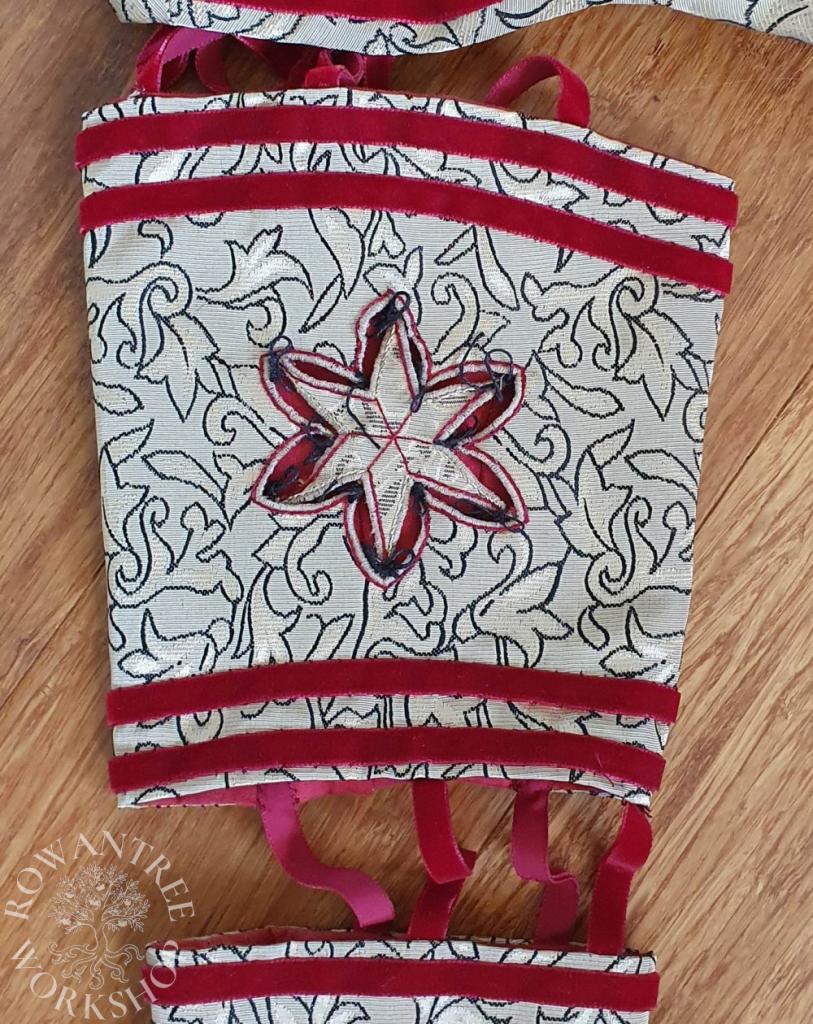
I finished the lower sleeve cuff with gold piping, sewed velvet ribbon along the edge, and then lined the cuff with red velveteen (as in the portrait). I lined the rest of the lower cuff in red cotton, enclosing the ribbons to tie the sleeves together. I tried on the gown and sleeve sections to get the ribbons the right length, then sewed these in place.
Finally, I checked the hem length and added the red velvet guard to the base of the skirt.
The Hemd in the Nüremberg looks like it has a high collarless neckline (under the necklace), with a shoulder seam. However, the Strigel portrait shows a Hemd with a visible back panel across the shoulders, but the front well below the Brustfleck. I usually wore it with a low necked Hemd.
I wore this gown for many years, over a red cartridge-pleated petticoat and with a pearled Haube and red velvet Barett. Light to wear, and great for travel – the synthetic brocade did not crush and it packed down very small.
Despite wearing it for 10 years, I could not find any pictures of me wearing the original version. I did lend it to my friend Ailis for an event in 2015 and she looked splendid in it:
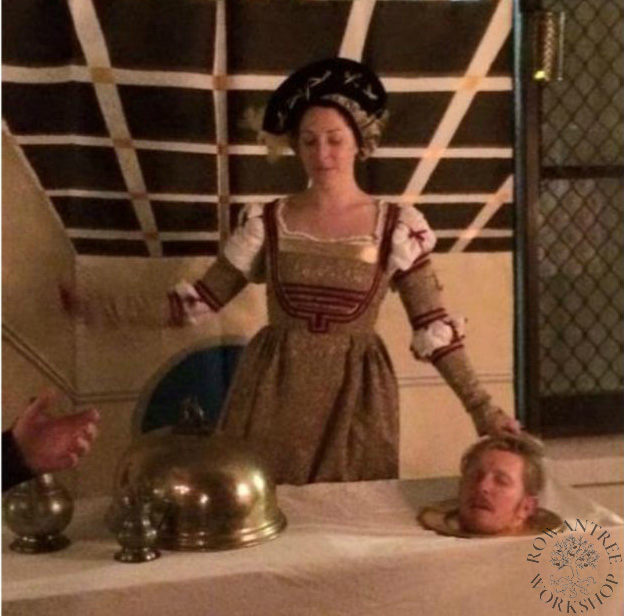
In later year, I renovated the gown to make it larger (details in Afterthoughts below). Here are some images are of the upsized version;
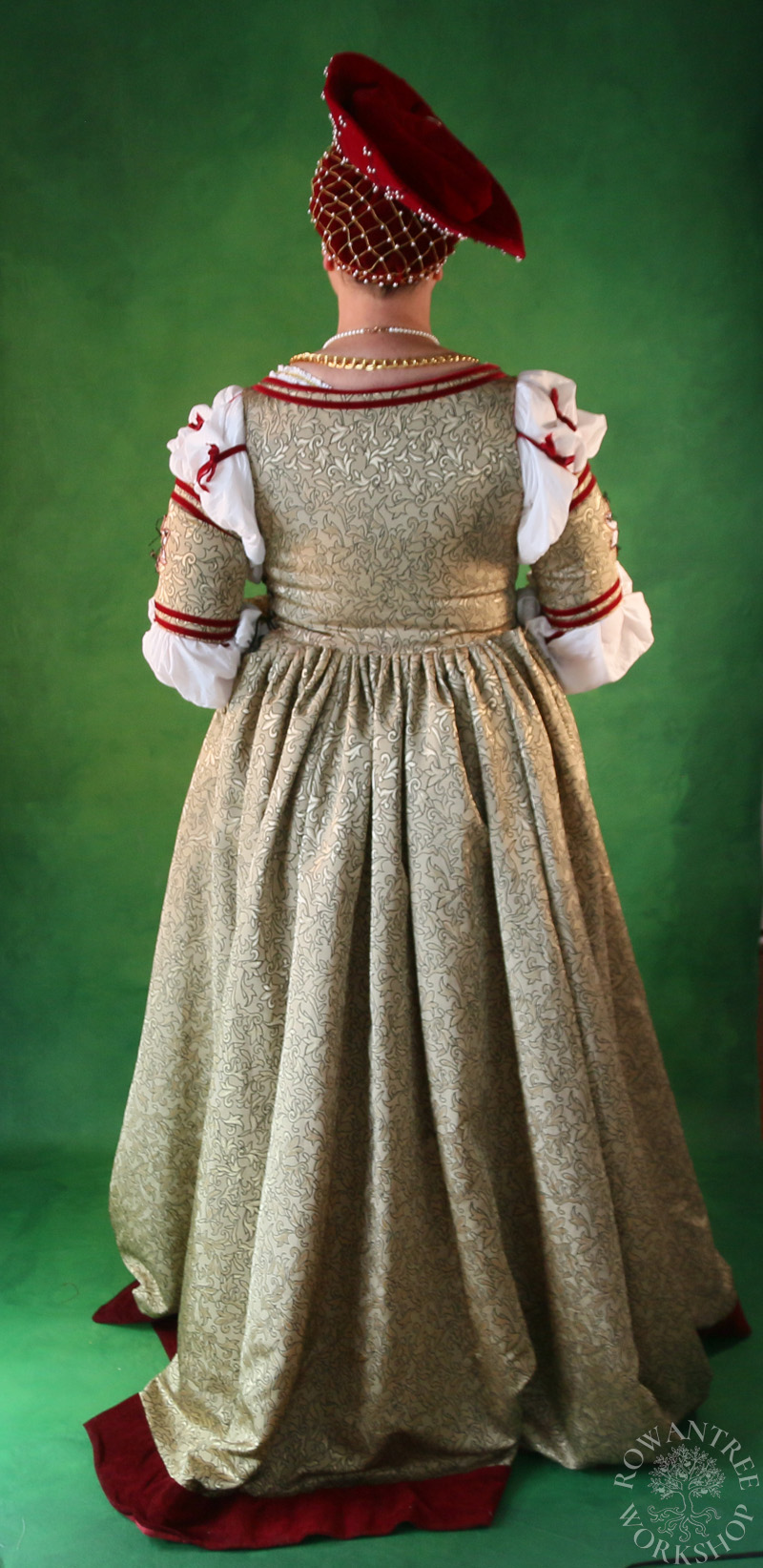
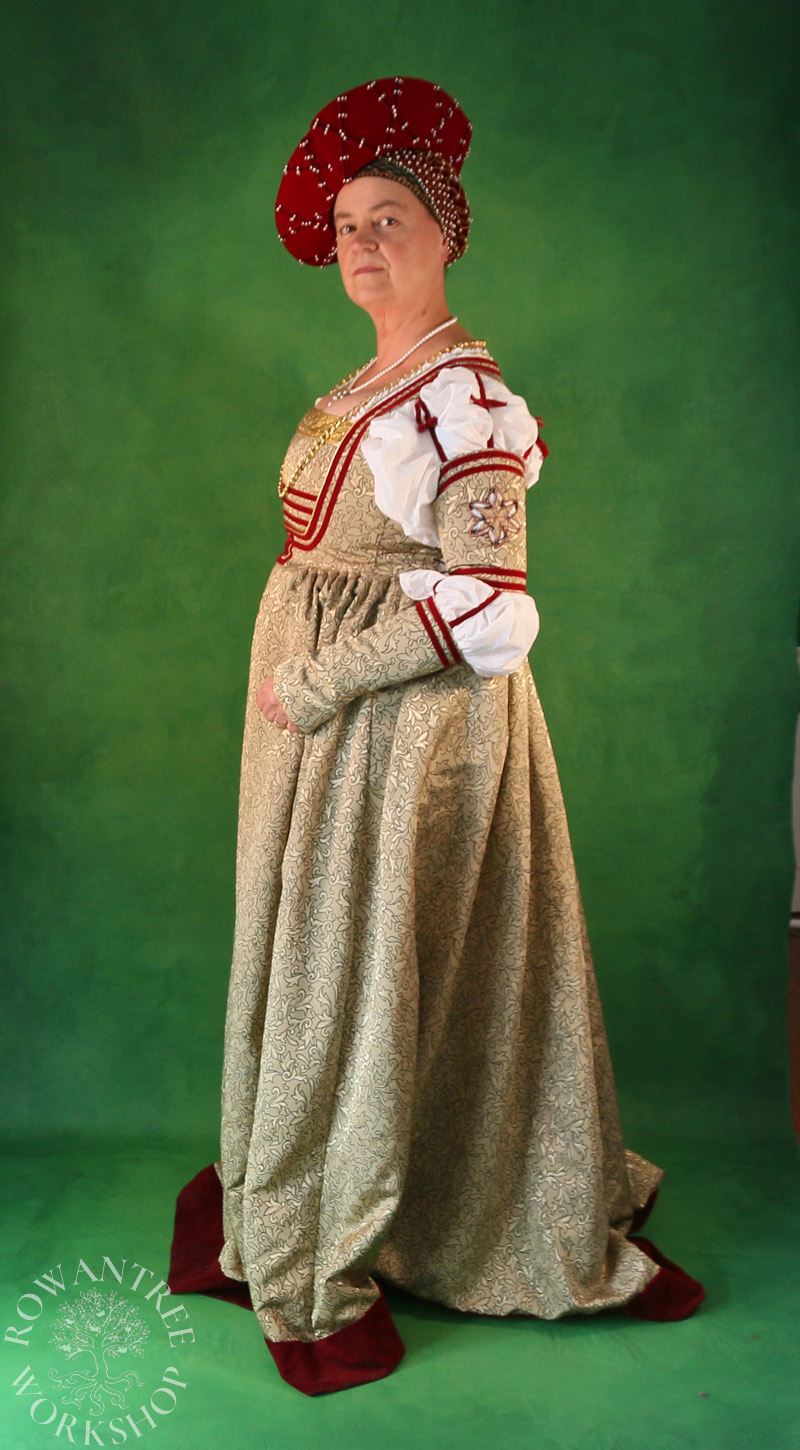
Afterthoughts
I used this same cutting approach in 2005 for another 1510s Rock – my pearled gown.
I still love the look of this gold gown, but not the fabric. I’d love to re-make it using real silk brocade! And these days, I would start with a full Unterrock, for better support and easier fitting.
After I changed shape, my wardrobe was a bit bare so I decided to try and re-size the gold gown, which was made when I was very slim. I still had some of the brocade, and it would be good to have it back in active use.
The sleeves still fitted, so I unpicked the skirt and bodice side seams. I inserted extra panels to both sides of the front bodice, smoothing the armscye line and adding extra lining panels. I sewed the skirt back on, adjusting the pleats. I also replaced the hooks and eyes with oversewn eyelets – lacing is much stronger and more flexible if needed.
